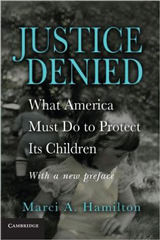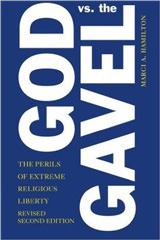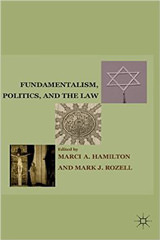From the ashes of a pandemic and shameless police brutality, a phoenix is rising. It took President Donald Trump. When he deployed federal police and forcefully scattered peaceful protesters to clear the way so that he could tote a Bible as he stood in front of a historic Episcopalian Church, the moment arrived. The authentic voices of clergy demanding inclusion, love, and truth rose to the heavens.
For over twenty years, religious dialogue in the United States has been dominated by a binary label: religious or secular, faith or no faith. The cakeshop owner who, God forbid, can’t abide having the cake he decorated at a same-sex wedding ceremony is religious while those who reject Jim Crow for LGBTQ are “secular.” A profit-driven, arts and crafts supply chain, Hobby Lobby, is religious, but the female employees who could not obtain cost-free contraception due to Hobby Lobby’s sacred beliefs are supposedly secular. The religious activists for this binary world fought and won at the Supreme Court in the Hosanna-Tabor decision the right to discriminate against their employees based on race, gender, disability, sexual orientation, and any other characteristic—regardless if their faith required such discrimination. This dichotomy is false, and it carries within it a gospel of exclusion.
The conservative Christians, who have commandeered the Republican Party and fought hardest for rights to exclude and discriminate, have labeled those who disagree with them “secular” as they wrapped themselves in faux religious liberty statutes like the Religious Freedom Restoration Act. They have insisted that their faith alone be our reality. Even a pandemic public health crisis has been insufficient to persuade some of them that they have a duty to the larger public good.
In fact, there are devout believers on both sides, and many do not preach the gospel of exclusion. Those voices are now breaking through. It’s not that the liberal believers have been completely silent, but they have been unable to compete with the cries for religious liberty as privilege, power, and triumphalism.
Finally, in response to Trump’s craven political move in the context of great suffering, we are hearing the voices of clergy spreading a message of inclusion and love. They have condemned Trump’s disgusting, soulless tactic to re-take the space we need them to occupy. These are the clergy whose trail was first cut by the Abolitionists and then widened by the Rev. Martin Luther King, Jr. and so many more. For over twenty years, the clergy voice that dominated the conversation has been one that insists their faith must be our reality, that exclusion is righteous, and that the end justifies the means. Enough.
The phoenix rising signals a rebirth of love for the other. We have a long way to go, but it is balm for the soul to hear religious leaders castigate Trump for using the Bible as a “prop” and for dictatorially declaring he will release federal troops to achieve “law and order” against protesters exercising their First Amendment rights to speech, assembly, and to petition the government. Their voices put in context the glorious images of police hugging protesters and police taking a knee in solidarity with protesters. That is love and inclusion, and that is our shared United States.
It has taken a pandemic and videotaped murderous police brutality to ignite the authentic diversity of religious voices that we have needed for over twenty years. Don’t stop now.









